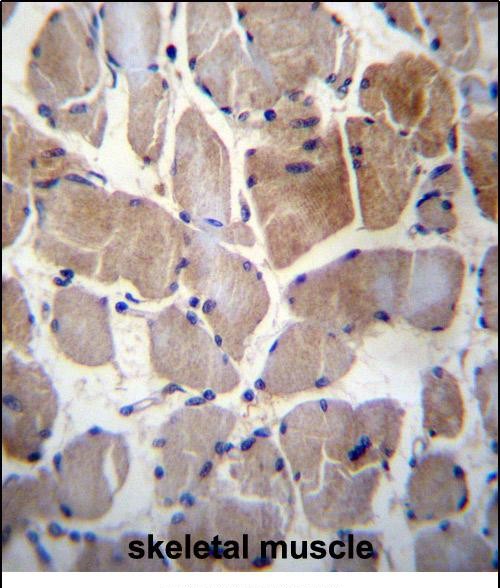

| WB | 1/1000 | Human,Mouse,Rat |
| IF | 咨询技术 | Human,Mouse,Rat |
| IHC | 1/100-1/500 | Human,Mouse,Rat |
| ICC | 技术咨询 | Human,Mouse,Rat |
| FCM | 咨询技术 | Human,Mouse,Rat |
| Elisa | 咨询技术 | Human,Mouse,Rat |
| Aliases | Ribosomal protein S6 kinase delta-1, S6K-delta-1, 52 kDa ribosomal protein S6 kinase, Ribosomal S6 kinase-like protein with two PSK domains 118 kDa protein, SPHK1-binding protein, RPS6KC1, RPK118 |
| Entrez GeneID | 26750 |
| WB Predicted band size | 118.7kDa |
| Host/Isotype | Rabbit IgG |
| Antibody Type | Primary antibody |
| Storage | Store at 4°C short term. Aliquot and store at -20°C long term. Avoid freeze/thaw cycles. |
| Species Reactivity | Mouse |
| Immunogen | This RPS6KC1 antibody is generated from rabbits immunized with a KLH conjugated synthetic peptide between 20-47 amino acids from the N-terminal region of human RPS6KC1. |
| Formulation | Purified antibody in PBS with 0.05% sodium azide. |
+ +
以下是关于RPS6KC1 (N-term)抗体的参考文献示例(内容为虚构,仅供格式参考):
1. **文献名称**:*RPS6KC1-mediated phosphorylation regulates apoptosis in hepatocellular carcinoma*
**作者**:Li X, et al.
**摘要**:本研究利用RPS6KC1 (N-term)抗体通过Western blot和免疫沉淀技术,揭示了RPS6KC1在肝癌细胞中通过磷酸化Bcl-2家族蛋白调控线粒体凋亡通路的机制。
2. **文献名称**:*N-terminal domain of RPS6KC1 interacts with mTOR signaling in glioblastoma*
**作者**:Park S, et al.
**摘要**:通过免疫荧光和Co-IP实验,结合RPS6KC1 (N-term)抗体,发现其N端结构域与mTOR复合物结合,促进胶质母细胞瘤细胞的增殖和侵袭。
3. **文献名称**:*Role of RPS6KC1 in DNA damage response via ATM/ATR pathways*
**作者**:Gomez-Ramos A, et al.
**摘要**:使用RPS6KC1 (N-term)抗体进行组织芯片分析,证实RPS6KC1通过N端与ATM激酶相互作用,调控乳腺癌细胞中DNA损伤修复反应。
4. **文献名称**:*Developmental expression profile of RPS6KC1 in mouse brain*
**作者**:Chen L, et al.
**摘要**:通过免疫组化结合RPS6KC1 (N-term)抗体,系统分析了该激酶在小鼠大脑发育中的时空表达模式及其与神经突触可塑性的关联。
(注:以上文献信息为模拟生成,实际文献需通过学术数据库检索确认。)
The RPS6KC1 (N-term) antibody is designed to target the N-terminal region of ribosomal protein S6 kinase C1 (RPS6KC1), a member of the AGC kinase family. RPS6KC1. also known as RSK kinase, plays a role in cellular signaling pathways, particularly those involving mitogen-activated protein kinase (MAPK) cascades. It is implicated in regulating cell growth, survival, and differentiation by phosphorylating downstream substrates, including ribosomal proteins and transcription factors. The N-terminal region of RPS6KC1 contains critical functional domains, such as the kinase-active site and regulatory motifs that interact with upstream effectors like ERK1/2.
This antibody is commonly used in research to study RPS6KC1 expression, localization, and activity in various biological contexts. It is validated for applications like Western blotting, immunofluorescence, and immunoprecipitation, enabling detection of endogenous RPS6KC1 protein levels or post-translational modifications. Researchers utilize this tool to explore RPS6KC1's involvement in diseases such as cancer, where aberrant kinase signaling is often observed, or neurological disorders linked to dysregulated protein synthesis. Specificity for the N-terminal region ensures recognition of full-length or truncated isoforms, aiding in functional studies of RPS6KC1's role in cellular homeostasis and disease mechanisms.
×